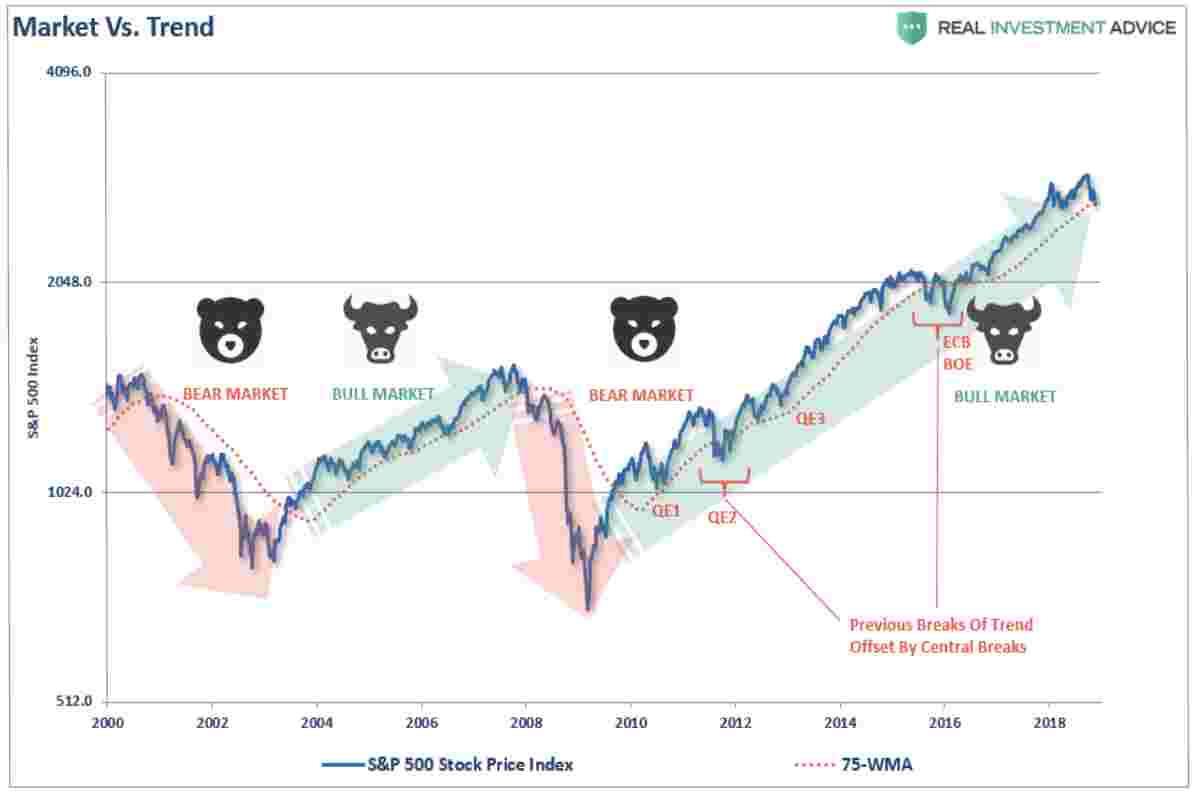Table of Contents
Other Markets Types of Trends
Knowing how to identify financial marketplace trends is an essential skill in technical analysis in trading. Why? Because they allow us to remember the direction of market movements, draw conclusions and make decisions based on them.
What are the Trends in the Financial Markets?
We can define the market trend in trading as the bearing in which a market moves sustainably during a certain interval.
The movement will never be in a straight line, but prices tend to vary up and down, forming a kind of wave that, together, will determine the trend. Other Markets Types of Trends
In The Following Image, We Demonstration This Concept In A Simple Way:
Analyzing market trends is essential in trading because it provides valuable information to take positions. We have the help of practical analysis and all its graphical tools to classify patterns, but we will see this later.
To identify trends in the stock market, it is also important to define your trading style and the time frame in which you will trade.
For example, if you practice scalping through a certain instrument and your charts are 5 minutes long, the tendency in that period will be different than if, for example, we trade long-term and schoolwork weekly or monthly charts. Other Markets Types of Trends
But before that, we must know the types of trends that exist.
Types Of Trends – Muscular, Bearish, And Lateral
Generally, trends can remain grouped into three large groups rendering to their direction: uptrend, downtrend, and adjacent trend or no movement.
Let’s see each of them in detail. With the MetaTrader trading podium, you can identify trends to apply what you learned during the article. It is also free.
Bullish trend or ‘bull market.’
An uptrend refers to a sustained upward movement of prices over a certain period. This trend is also known by Anglicism as the ‘ bull market ‘ and remains characterized by a feeling of optimism and confidence because the pressure of demand exceeds that of supply, hence it reflects an increase in prices.
Bull in English means bull, a symbol of vitality and strength.
An uptrend generally begins after a period of indecisiveness and doubts in the market and formerly chaining lows and highs to the upside.
In an uptrend, we can detect three phases, according to the Dow Theory :
- Investors have a moderate attitude, a certain caution, little volume in the market, and some uncertainty, so sales occur.
- Confidence returns to the market little by little, stockholders return to seek profitability, volume surges, and prices start to rise. The graph shows how the highs and lows are increasing.
- The bullish period gradually stops as large investors and more experienced traders believe it is time to exit the market and sell. At the same time, the fewer experts buy, thinking they will achieve quick and easy returns.
Bearish trend or ‘Bear market.’
The downtrend or bear market refers to the moment in which the price begins to fall steadily. The pessimism starts to spread across the market and the fear of losing money. Investors start to exit the market, and the marketing pressure outweighs the buying pressure. The highs and lows are decreasing.
In the same way as the uptrend, the downtrend of the markets has three phases:
- The price reaches its absolute maximum, and from that, crowning begins to fall when the first sell orders appear.
- Prices fall more steeply as bears (also called bears) take over the market. Pessimism spreads, and investors are observing to get out of the market quickly.
- fear leads traders to dump their possessions at whatever price.
Side Trend Or Market Without Trend
We speak of a lateral trend when the market cannot choose between an uptrend and a downtrend. The asset’s price oscillates in a narrow range, amongst supports and resistances, without great variations during a certain period.
Large returns are not usually achieved during a side market, of course, since the price hardly moves in a very small range, so investors do not usually like this trend.
However, it must remain in mind that if it is a long-term tendency, you can always find small upward and downward trends as in the image above, which can serve us modest opportunities. On the other hand, we can always benefit from stock dividends when it comes to stock trends.

